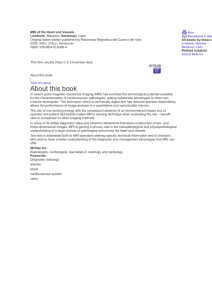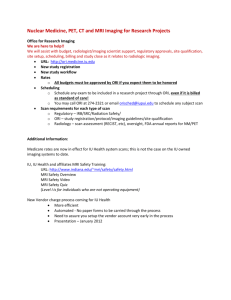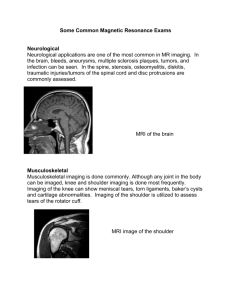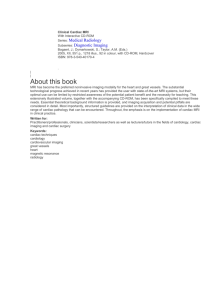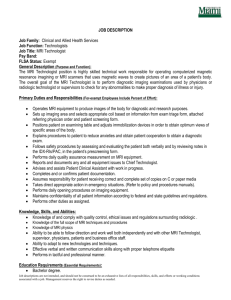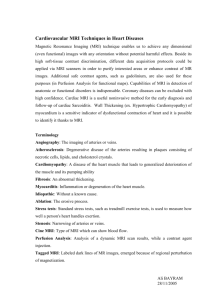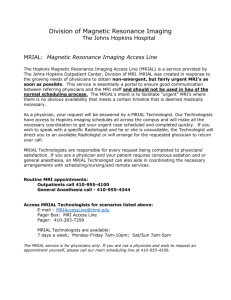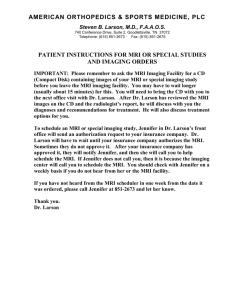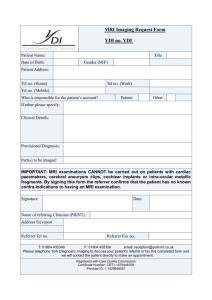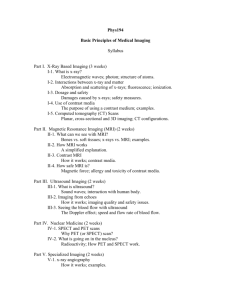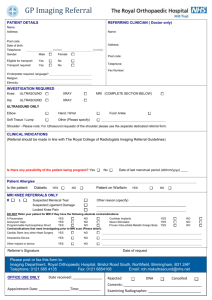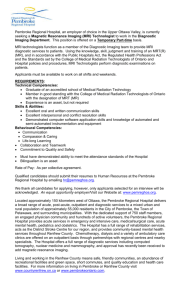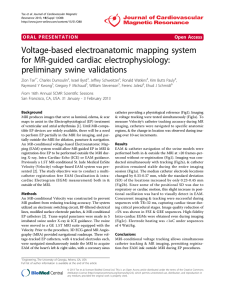the impact of non-invasive magnetic resonance imaging on pediatric
advertisement
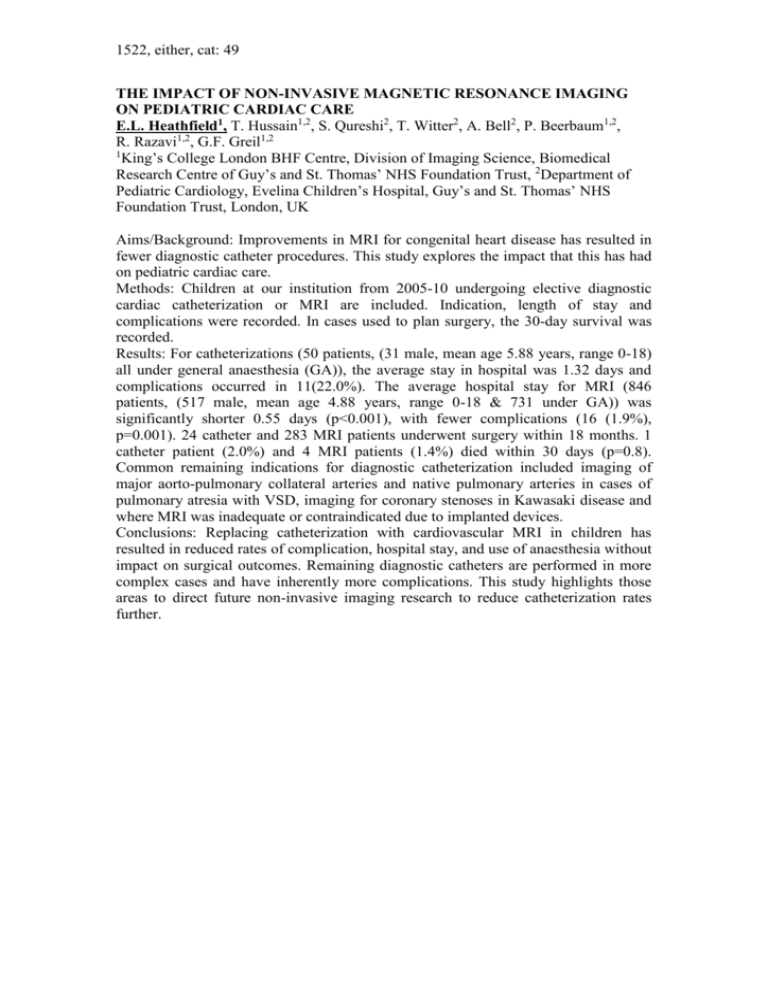
1522, either, cat: 49 THE IMPACT OF NON-INVASIVE MAGNETIC RESONANCE IMAGING ON PEDIATRIC CARDIAC CARE E.L. Heathfield1, T. Hussain1,2, S. Qureshi2, T. Witter2, A. Bell2, P. Beerbaum1,2, R. Razavi1,2, G.F. Greil1,2 1 King’s College London BHF Centre, Division of Imaging Science, Biomedical Research Centre of Guy’s and St. Thomas’ NHS Foundation Trust, 2Department of Pediatric Cardiology, Evelina Children’s Hospital, Guy’s and St. Thomas’ NHS Foundation Trust, London, UK Aims/Background: Improvements in MRI for congenital heart disease has resulted in fewer diagnostic catheter procedures. This study explores the impact that this has had on pediatric cardiac care. Methods: Children at our institution from 2005-10 undergoing elective diagnostic cardiac catheterization or MRI are included. Indication, length of stay and complications were recorded. In cases used to plan surgery, the 30-day survival was recorded. Results: For catheterizations (50 patients, (31 male, mean age 5.88 years, range 0-18) all under general anaesthesia (GA)), the average stay in hospital was 1.32 days and complications occurred in 11(22.0%). The average hospital stay for MRI (846 patients, (517 male, mean age 4.88 years, range 0-18 & 731 under GA)) was significantly shorter 0.55 days (p<0.001), with fewer complications (16 (1.9%), p=0.001). 24 catheter and 283 MRI patients underwent surgery within 18 months. 1 catheter patient (2.0%) and 4 MRI patients (1.4%) died within 30 days (p=0.8). Common remaining indications for diagnostic catheterization included imaging of major aorto-pulmonary collateral arteries and native pulmonary arteries in cases of pulmonary atresia with VSD, imaging for coronary stenoses in Kawasaki disease and where MRI was inadequate or contraindicated due to implanted devices. Conclusions: Replacing catheterization with cardiovascular MRI in children has resulted in reduced rates of complication, hospital stay, and use of anaesthesia without impact on surgical outcomes. Remaining diagnostic catheters are performed in more complex cases and have inherently more complications. This study highlights those areas to direct future non-invasive imaging research to reduce catheterization rates further.




